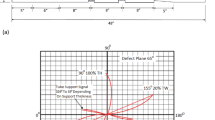Abstract
Industrial plants currently account for approximately 70 percent of overseas construction but still require design knowledge when evaluating the economic profit in the field of plant engineering. Most engineering and construction companies remain focused on the construction of plant structures and have a lack of knowledge on the differences between the design of structural members according to design standards. Among international design standards, the US and Euro codes are most widely used for the design of plant structures in the world. In particular, the size of plant structural members is mainly dependent on lateral loads. Therefore, two international design standards, the US and Euro codes, and one local design standard, the Korean code, were selected to evaluate the magnitude and the distribution of design wind load for three real plant pipe-rack structures. The US code exhibited about 15% and 25% smaller design wind load than the Korean and Euro codes, respectively. This paper also discusses the stress statuses and the strength ratios required for the design of structural members. Axial and bending stresses were found to be the smallest in the US code. The required strength was smallest in the Korean code because of the lower of wind load factor.
Similar content being viewed by others
References
American Institute of Steel Construction (AISC) (2005). Steel construction manual, Chicago, USA.
American Society of Civil Engineers (ASCE) (2005). ASCE 7–05 Minimum design loads for buildings and other Structures, Virginia, USA.
American Society of Civil Engineers (ASCE) (2010). ASCE 7–10 Minimum design loads for buildings and other Structures, ASCE 7–10, Virginia, USA.
Architectural Institute of Korea (AIK) (2009). Korean building code, Korea (In Korean).
Bashor, R. and Kareem, A. (2009). “Comparative study on major international standards.” Proc. 7 th Asia-Pacific Conference on Wind Engineering, Taipei, Taiwan.
Durst, C. S. (1960). “Wind speeds over short periods of time,” Meteorological Magazine, Vol.89, pp.181–187.
European Committee for Standardization (CEN) (2005). Eurocode 1: Actions on structures, EN 1991-1-4:2005, Brussels, UK.
European Committee for Standardization (CEN) (2005). Eurocode 2: Design of steel structures, EN 1993-1:2005, Brussels, UK.
International Code Council (IBC) (2009). International building code, Illinois, USA.
International Code Council (IBC) (2012). International building code, Illinois, USA.
Karaca, Z. and Türkeli, E. (2012). “Determination and comparison of wind loads for industrial reinforced concrete chimneys.” The Structural Design of Tall and Special Buildings, Vol.21, No. 2, pp.133–154, DOI: 10.1002/sal.617.
Korean Society of Steel Construction (KSSC) (2009). Korean steel structure design code-load and resistance factored design, Korea (In Korean).
Kwon, D. and Kareem, A. (2013). “Comparative study of major international wind codes and standards for wind effects on tall buildings.” Engineering Structures, Vol.51, pp.23–35, DOI: 10.1016/j.engstruct.2013.01.008.
MIDAS/Gen (2013). General structural design system. MIDAS/Gen Ver. 8.0, Midas Information Technology Co. Ltd., http://www.midasit.com.
Topkaya, C. and Sahin, S. (2011). “A comparative study of AISC-360 and EC 3 strength limit states.” International Journal of Steel Structures, Vol.11, No. 1, pp.13–27, DOI: 10.1007/S13296-011-1002-x.
Zhou, Y., Kijewski, T., and Kareem, A. (2002). “Along-wind load effects on tall buildings: Comparative study of major international codes and standards.” ASCE Journal of Structural Engineering, ASCE, Vol.128, No. 6, pp.788–796, DOI: 10.1061/(ASCE)0733-9445(2002)128:6(788).
Author information
Authors and Affiliations
Corresponding author
Rights and permissions
About this article
Cite this article
Lee, JH., Huh, J. & Lee, JJ. A comparative study on wind loads between design standards for the design of pipe-rack structures. KSCE J Civ Eng 20, 293–300 (2016). https://doi.org/10.1007/s12205-015-0359-3
Received:
Revised:
Accepted:
Published:
Issue Date:
DOI: https://doi.org/10.1007/s12205-015-0359-3




